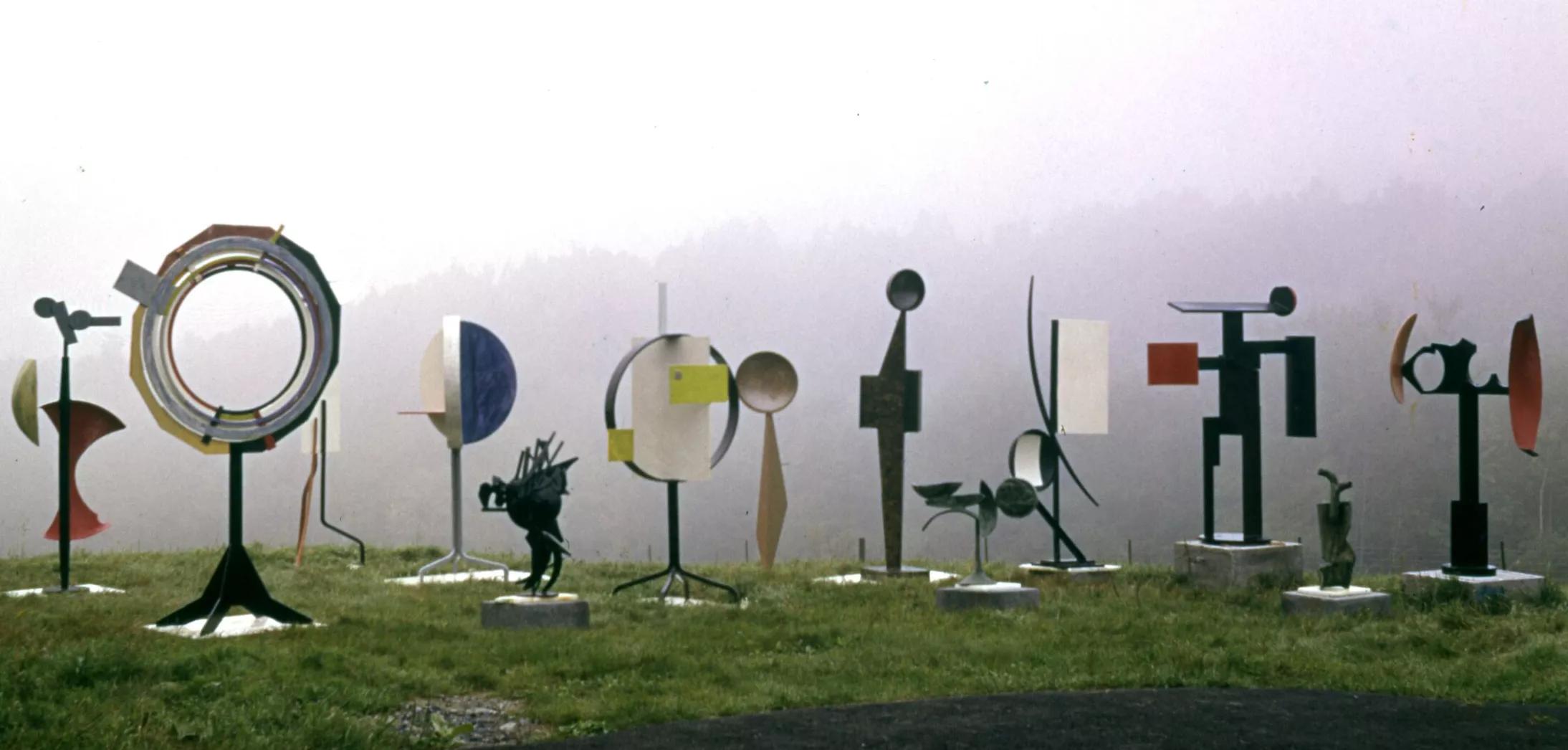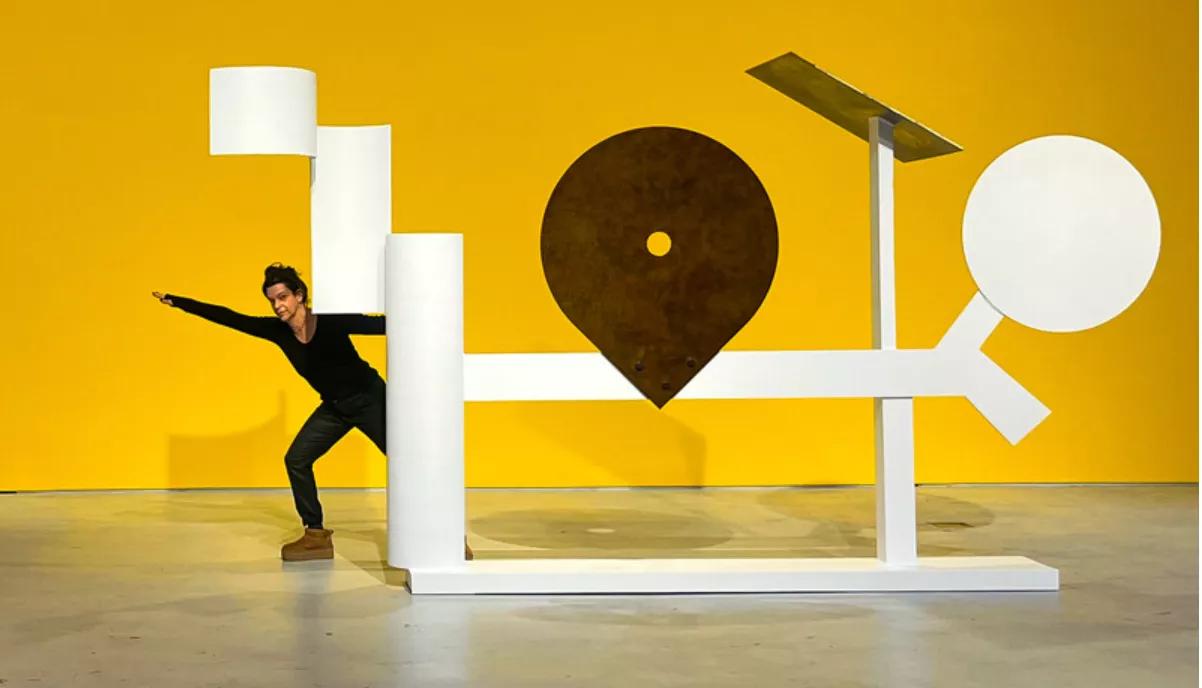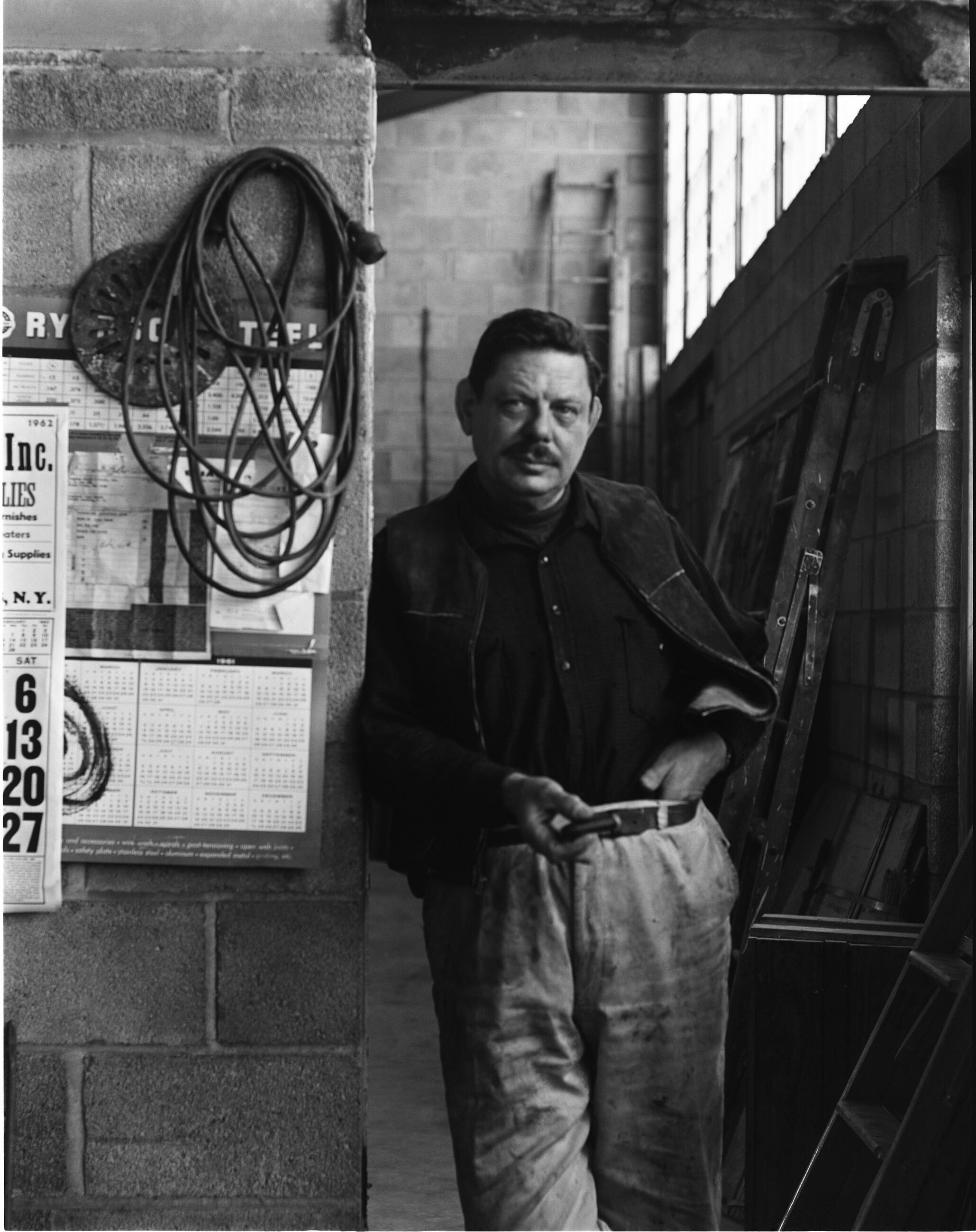
No One Thing
David Smith, Late Sculptures
1 February – 13 April 2024
New York, 22nd Street
‘David Smith’s sculptures are—big or small, figurative or abstract—very complete, very attentive to your presence. They’re generous; they have no boring views. Circle them as you may, they are never napping. They present a total attention, and they are telling you that that is the way to be: on guard.’
— Frank O’Hara, 1964
Explore the exhibition
One of the most influential and innovative artists of the 20th Century, and the sculptor most closely associated with the abstract expressionist movement, David Smith (1906–1965) was at his most experimental and prolific in the last five years of his life. During this period, he created approximately a third of his sculptural oeuvre. He deployed welding to newly monumental ends, integrated open space into his arrangement of planar forms and animated sculptural surfaces with paint in color combinations that transcended logic—all innovations that transgressed the norm, solidified his legacy and impacted generations of artists to come. In their sheer variety, Smith’s late works are nevertheless united by a single shared characteristic: blazing, liberated inventiveness.
While Smith often grouped objects together with series titles, he worked on multiple series simultaneously and understood each sculpture as it ‘related to my past works, the three or four works in process and the work yet to come.’ He also cited the importance of painting in his practice, noting that not only is the history of sculpture painted, but for Smith each planar surface had its ‘own properties in form as well as in color, and then color adds another challenge.’ The seven painted sculptures in ‘No One Thing’ are exemplary of his refusal to adhere to one way of making or a single style. Drawn from signature series such as the Zigs, Primo Pianos and Gondolas, as well as important sculptures that were not serially designated, including ‘Circles Intercepted’ (1961), ‘Ninety Son’ (1961), ‘Rebecca Circle’ (1961) and ‘Untitled’ (1963), the works on view evidence the artist’s sustained conversation with materiality, form and surface.

Hauser & Wirth will celebrate the enduring dynamism of the works on view with a series of walkthroughs and performances by artists from across disciplines, highlighting the sweep of Smith’s impact on future generations and reflecting the kind of intensive dialogue he often undertook with other artists, colleagues and students throughout his career. Moreover, the exhibition, flooded with constantly changing natural light in the gallery’s soaring fifth floor space, is presented in a way that evokes Smith’s own perspective of these works as they once were arranged in his fields at Bolton Landing. In 1956 Smith told a group of young artists, ‘I’ve been more concerned with questions than I have with answers.’ This reflection indicates Smith’s notion of his sculpture-making as an exploratory and ever-evolving practice, and invites viewers to locate connective yet open-ended threads among seemingly eclectic works.
Primo Piano II
1962
Steel, bronze, stainless steel, paint
225.1 x 408.3 x 79.4 cm / 88 5/8 x 160 3/4 x 31 1/4 in
© 2024 The Estate of David Smith / Licensed by VAGA at Artists Rights Society (ARS), NY
Photo: Ron Amstutz
Gondola II
1964
Steel, paint
278.8 x 274.3 x 45.7 / 109 3/4 x 108 x 18
© 2024 The Estate of David Smith / Licensed by VAGA at Artists Rights Society (ARS), NY
Ninety Son
1961
Steel, paint
188 x 50.8 x 33 cm / 74 x 20 x 13 in
© 2024 The Estate of David Smith / Licensed by VAGA at Artists Rights Society (ARS), NY

In Response: Choreographer Pam Tanowitz on ‘No One Thing. David Smith, Late Sculptures’
On the occasion of the exhibition 'No One Thing. David Smith, Late Sculptures’, and paying homage to David Smith’s interest in music and dance, please join us for a performance in response to the works on view with choreographer Pam Tanowitz, and dancers Marc Crousillat, Victor Lozano, and Maile Okamura.
This event is free. However, due to limited space, reservations are required.
Photo of Pam Tanowitz with Primo Piano II (1962) in ‘No One Thing. David Smith, Late Sculptures’

On View at New York, 22nd Street
‘No One Thing. David Smith, Late Sculptures’ is on view until 13 April
About the Artist

David Smith
David Smith is regarded as one of the most innovative artists and important American sculptors of the 20th century. He transformed sculpture by rejecting the traditional methods of carving and casting in favor of torch-cutting and welding, becoming the first artist known to make welded sculpture in America. These methods allowed him to work in an improvisational manner in creating open and large-scale, abstract sculptures. In his later years, he installed his sculptures in the fields of his home in the Adirondack Mountains, where a dialogue between the art object and nature emerged as central to his practice. His sculpture-filled landscape inspired Storm King Art Center and other sculpture parks throughout the world, as well as anticipating the land and environmental art movements.
Smith was born in 1906 in Decatur, Indiana. He worked briefly as a welder in an automobile factory before moving to New York City to become an artist in 1926. He studied painting at the Art Students league, where Cubism and Surrealism were foundational to his practice. He began welding sculpture around 1933 after seeing reproductions of constructed steel sculptures by Pablo Picasso and Julio González. He later became associated with the abstract expressionist movement and paved the way for minimalism with radically simplified, geometric works. Painting and drawing remained integral to what Smith called his ’work stream’. He embraced a holistic attitude toward artmaking and dismissed the idea of a separation between mediums. Acknowledging the tradition of painted sculpture throughout art history and drawing from the bold palettes of modernism and pop culture, Smith often painted his sculptures. David Smith died in 1965, leaving behind an expansive, complex, and powerful body of work that continues to exert influence upon subsequent generations of artists.
Smith began exhibiting his work as early as 1930. His first survey was organized by the Museum of Modern Art, New York in 1957. His sculpture was represented by the United States at the São Paulo Biennale in 1951 and at the Venice Biennale in 1954 and 1958. Posthumous retrospectives have been held at the Solomon R. Guggenheim Museum (1979 and 2006, which traveled to Tate Modern, London and the Centre Pompidou, Paris) and at the Los Angeles County Museum of Art (2011, which traveled to the Whitney Museum of American Art, New York and the Wexner Center for the Arts, Columbus, Ohio). Other major surveys have been organized at the Sezon Museum of Art, Tokyo (1994, traveled throughout Japan), the Museo Nacional Centro de Arte Reina Sofía, Madrid (1996), Storm King Art Center (1997–99), and Yorkshire Sculpture Park, Wakefield, UK. A three-volume, fully illustrated catalogue raisonné of Smith’s sculpture was published in 2021 by the Estate of David Smith and distributed by Yale University Press. A biography by Michael Brenson, David Smith: The Art and Life of a Transformational Sculptor, was published by Farrar, Straus, and Giroux in 2022.
Current Exhibitions
1 / 9




















